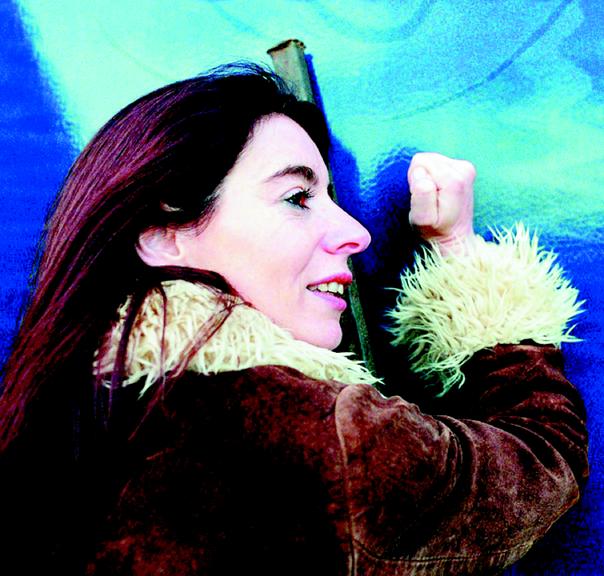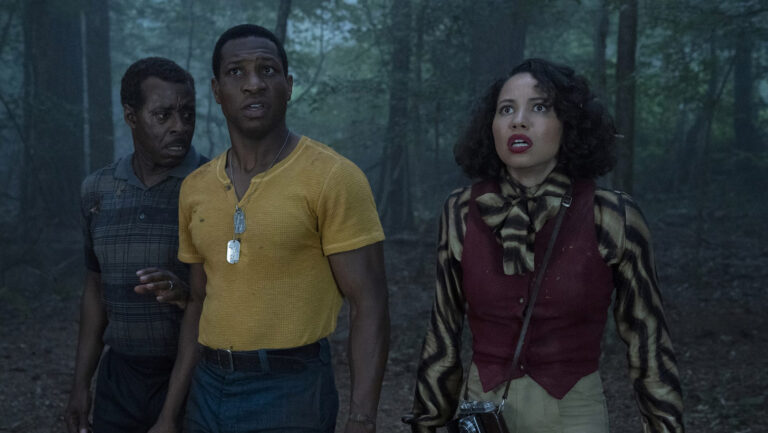Devoted fans of Rivers and Tides will no doubt be pleased to hear that Riedelsheimer has finally found himself a worthy follow-up subject. Her name is Evelyn Glennie. She is an attractive Scottish lass with an ever-mutating hair color and a preternatural skill at the art of percussion. Oh, and she's also–poetic irony in overdrive–profoundly deaf.
Touch the Sound follows Glennie around the world as she searches for new forms of rhythm: Taiko drummers in Japan, Afro-Cuban percussionists in New York. With this music, the film's title becomes more than a metaphor. Glennie can “hear” the music by feeling the vibrations in her bones. She also produces a profoundly tactile form of music–slapping walls, tapping cans, fiddling with radio static, fingering a cluster of cockleshells attached to a beach rock. Occasionally, she even uses real instruments. Glennie's improvisational music is startling, creative. Like the surrounding film, it is utterly mesmerizing.
The centerpiece of the film is Glennie collaborating with composer/guitarist Fred Frith (who wrote the soundtrack to Rivers and Tides) on an improvisational album recorded in an abandoned factory in Germany. While Frith crams chopsticks into the neck of his electric guitar, Glennie bangs away at rusty pipes and runs a bow across a tatter of sheet metal. On paper, it sounds ungodly. But in practice, the sound is impossibly beautiful.
At first, you would think that music isn't quite as visual a subject as sculpture. And you'd be right. But Riedelsheimer hasn't lost any of his visual flair. Plus, he's contributed a strong aural component that adds a tactile third dimension to the film.
The premise of Touch the Sound is that “music” is all around us. Everyday life has a rhythm that we modern homo sapiens might miss in our workaholic frenzy. But percussion–music in its raw, primitive form–picks up on these heartbeats of humanity. A concert on a rooftop in New York City uses a nearby building demolition as industrial backbeat. A driving drum duo in Japan is juxtaposed with the speedy metronome of the bullet train. You might even be tempted to take your shoes off–like the film's subject–in order to more fully “touch the sound.” Those Coke stains on the theater floor will probably dissuade you, however.
In the end, Touch the Music is a bit more frosting than cake. The film doesn't dig all that deeply into Glennie's history and philosophy. It sticks, most often, to surface sights and sounds. Is there a purpose to this woman's worldwide quest, or is it just an excuse to shoot pretty pictures of her framed up against Mount Fuji, Grand Central Station and other notable landmarks while thrumming out her beautiful noise? Not to denigrate the sights and sounds–they're a wonder to behold. But a bit more depth might have made the film linger longer in memory. For example, at one point it is revealed that the family farm Glennie grew up on has burned down. There are a few artfully framed shots of the burnt-out shell, but not a single word on how Glennie feels about this.
Dramatic resonance aside, Touch the Sound functions as a worthy follow-up to Rivers and Tides. It, like its predecessor, is a profound spiritual examination of the ephemeral. In capturing the sound art of Evelyn Glennie on film, director Thomas Riedelsheimer has frozen for all time an art form that (like the fragile constructions of Andy Goldsworthy) doesn't linger long in this world. He's also exposed us to the world as seen through the eyes (and nerve endings) of a true artist–a world where the subtle intake and exhalation of breath becomes a chorus and the minute tinkling of a zipper on a rolling suitcase at the airport becomes a symphony.



